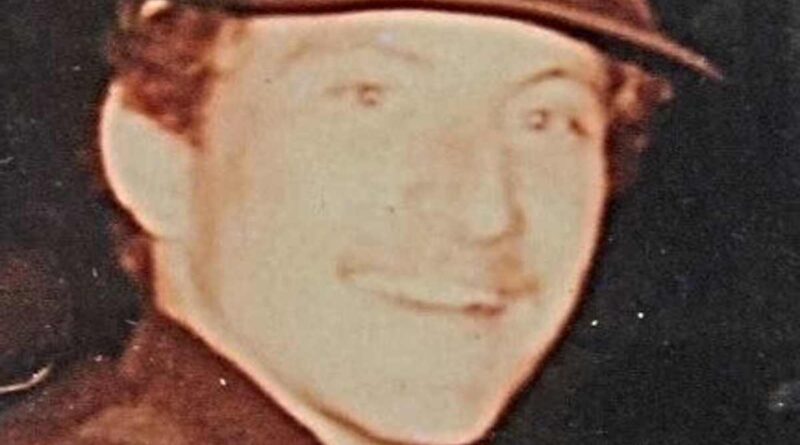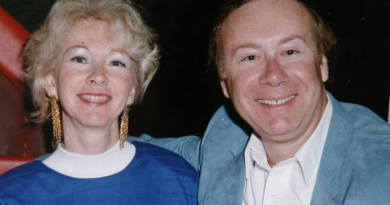Rodney Lynn Kiser Disappeared in Hazel Mountain Virginia
Hazel Mountain Virginia is a place of switchback roads, hardwood forests, and hollows that keep their own counsel. In the spring of 1990 it was also home to a man named Rodney Lynn Kiser. On the evening of April 26 he vanished from that landscape with a stillness that defies easy explanation. The disappearance of Rodney became one of the most enduring mysteries in the mountains, a case shaped by close knit ties, rugged terrain, and a handful of clues that raise as many questions as they answer.
The man behind the name
Rodney was thirty two years old in 1990. He had worked as a deputy with the local sheriff before moving into retail work with his family, helping at a small market that served mining and timber communities. People knew him as capable and steady. He hunted, he worked hard, and like many who call the Appalachians home he knew the are back roads better than any map could show. He was not known to leave without word. In fact the weight of this case is carried in part by how stubbornly normal his life appeared in the days before he vanished.
The last day anyone can fix in time
April 26 1990 was a Thursday. It felt like any other workday in that part of Virginia. Accounts place Rodney at or near his residence on Hazel Mountain, a home set back from the road, with a narrow driveway and woods that closed around the property as if to keep it from view. Evening arrived and there is an assertion that he intended to travel east to see family in the northern part of the state. The next morning no one could say they had seen him leave that mountain. The day after that and the day after that turned into a week that would define the case.
The search begins the families call and the first questions
When Rodney did not appear where he was expected and he did not check in, family members and friends began to worry. Out here the first searchers are usually neighbors and kin. They drove the ridges, stopped at gas stations, and asked at diner counters whether anyone had seen a tan Dodge pickup. The local sheriff office opened an inquiry and soon the Virginia authorities joined the effort. What turned a missing person report into a possible crime were two discoveries that came almost back to back.
A truck left in plain sight and a home with troubling signs
Rodney owned a tan 1983 Dodge Ram 150 pickup. It was familiar to anyone in the area. The truck was located at a property connected to Rodney, not the Hazel Mountain residence where he had been living but an older place where he had kept a trailer and an addition. The vehicle was unlocked with the keys left in the ignition and a window partly down. Inside the cab were items people do not usually abandon if they plan to be away for long. A checkbook. Some cash. Store vouchers from the market. What was not present was the firearm he routinely carried, a .357 Magnum revolver.
The second discovery came when searchers and deputies looked through the old trailer and its added room. There were smears of blood visible in the addition. It was not a large amount but it was enough to put a different cast on the entire scene. There was no body. There were no obvious signs of a struggle in the yard. There were no footprints that could be trusted after days of spring weather. Yet the totality of the picture was troubling. A truck that looked as if its owner had only stepped away for a minute. Valuables left behind. A missing sidearm. Blood where there should have been none.
Conflicting intentions and early leads
One thread investigators tried to pull was the question of where Rodney planned to go that night. There was a statement that he intended to visit his brother in the city of Alexandria. That would have been a long drive from the coal hills to the Potomac, but it was not unheard of. The brother did not report expecting him. No toll receipts surfaced. No gas station employee remembered a face well enough to be sure. Early tips came in with the same mix you find in every rural case. Someone thought they saw a similar truck near a ridge road. Someone else heard a gunshot a few nights earlier. None of it coalesced into a firm direction.
The mountain itself as a character in the story
To understand why this disappearance resisted quick answers you have to picture Hazel Mountain and the surrounding country. Roads twist through the forest and then fall away to creek beds. Abandoned trailers sit behind scrub and laurel. Old fire towers and line roads cut across the ridges. In late April the trees leaf out and swallow sight lines. If a vehicle is parked two bends off the main road it can sit there for days. If someone leaves a truck at a familiar property, a casual passerby will not suspect anything is wrong. The land preserves secrets by simple inaccessibility.
Handling of evidence and the passage of time
The initial response found the truck and the blood, but much of what makes or breaks a case is the chain of custody and the completeness of the first days. Samples were collected. Notes were made. As months turned to years there were inevitable losses. Record keeping in a small office thirty five years ago was not what it is today. Physical evidence ages. Memories fade or harden into stories that may fit the teller as much as the truth. None of that is a criticism of the people who worked the case. It is a reality that erodes the edges of any investigation that does not close quickly.
What the known facts suggest
Pull the strands together and a picture emerges. Rodney does not leave of his own accord with valuables left in his truck. He does not plan a long drive and then fail to take the essentials of such a trip. He does not simply forget his sidearm. The presence of blood at the old trailer strongly suggests he was injured at or near that site. The missing firearm suggests either a struggle in which it was taken or that someone who knew his habits removed it to complicate the search. The truck left with keys visible is either a signal or a staging choice. It reads as staged because it is not how a proud truck owner secures a vehicle.
Common theories in the community
The first theory is a targeted assault tied to a personal dispute or a past grievance. Rural communities remember long conflicts, and a former deputy who later worked the cash register at a market would know many people and many stories. The second theory is that Rodney was lured to the old trailer under a pretext and attacked there, with the vehicle later placed to misdirect. The third theory is a chance encounter turned violent, but that is the least persuasive given the location and the timing. A fourth line of thought links the case to the broader traffic of the era, when cash businesses and remote roads occasionally attracted people who preferred to be unseen. What weakens every theory is the absence of a body and the absence of a clear timeline after the evening of April 26.
The impact on family and on the public
A disappearance is not a single event for a family. It is a continuing condition. Without remains there is no funeral. Without a suspect there is no courtroom to attend. Families have to keep telling the story so that it does not cool completely, and communities have to hear it often enough that someone who knows a small piece will finally come forward. For decades now loved ones have balanced hope with acceptance. They have asked for tips. They have cooperated with interviews. They have waited for an answer that to this day has not arrived.
Law enforcement efforts through the years
The sheriff office in Dickenson County and the state investigators have never formally closed the case. They have processed tips as they came. Cold case reviews have revisited the files. Advances in forensic methods give reason to hope that even small preserved items might yield new information. Every new review starts with the same basics. Where and when was he last verifiably seen. What is the shortest chain that can connect him to the truck. Who had motive and opportunity. Who has talked and who has refused to talk. That patient work continues even when there are no headlines.
Why this case endures in the regional memory
Some cases remain present because they represent something essential about a place. This one does. It is the meeting point of isolation and familiarity. Everyone knew the truck. Everyone knew the man. Yet the mountain and the old trailer gave cover to whoever set these events in motion. The details are specific, but the feeling they carry is universal in small towns. If a man like Rodney could vanish, then the line between ordinary life and a sudden break in the pattern is thinner than anyone wants to admit.
What it would take to unlock the truth
The investigation would benefit from three things. First, a witness who has held back a detail out of fear or loyalty. Second, a reexamination of stored materials with modern methods that were not available in 1990, even at a micro scale. Third, a re mapping of the sites using current terrain data and seasonal imagery to test disposal scenarios and travel times between known points. None of these require luck. They require persistence and a community willingness to let the past be examined without favor.
Closing reflection
The disappearance of Rodney Lynn Kiser on April 26 1990 on Hazel Mountain in Virginia is the kind of story the land does not easily give up. A truck left in plain sight, valuables untouched, a missing sidearm, and traces of blood at an old trailer together form a puzzle with hard edges. The case persists because it matters. It matters to the people who loved him. It matters to a community that wants to believe that truth eventually surfaces even in the deepest hollows. Someone knows a piece of that truth. Until that piece is spoken aloud the mountain keeps its silence and the question remains open.
Discover more from City Towner
Subscribe to get the latest posts sent to your email.




